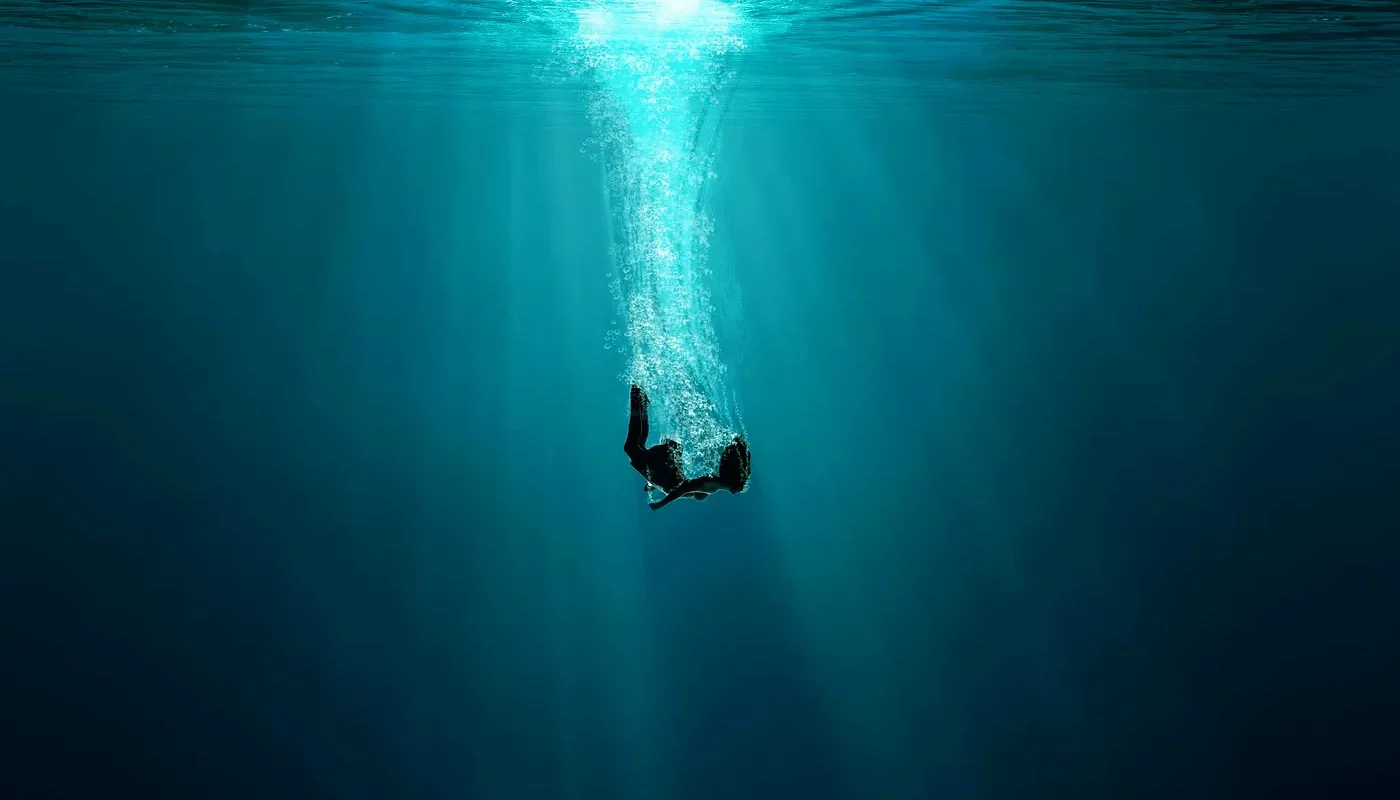If the surface becomes uninhabitable, the colonization of the ocean could be a necessary step for the preservation of our species; but there’s a greater question we’ve yet to address. Could humans actually live underwater?
Any ocean-based habitat must satisfy a short-list of basic human needs. A functioning settlement must guarantee the safety, survival, and comfort of its inhabitants; however, providing even the most essential human needs creates several unique challenges. In terrestrial ecosystems, humans can breathe freely, but humans rely on technology, like SCUBA equipment, to inhale and exhale underwater. Like astronauts in space, we cannot survive in the ocean without a constant and reliable source of air. Before we build homes and cities on the ocean floor, we have to create a breathable environment, like a giant bubble, cycling a steady stream of breathable air.
Pressure control is another necessity inside any ocean habitat. At the surface, humans have adapted to atmospheric pressure; but, for every 10 meters underwater, the pressure rises by one standard atmosphere (atm)—the same amount of pressure we experience at sea level. If you dive deeper than 25 meters, the nitrogen in the air can cause a condition called inert gas narcosis, messing with your mind and making it tough to make good judgments and hallucinations similar to the effects of an anesthetic. To keep their minds clear underwater and dodge inert gas narcosis, divers frequently use Heliox, which combines 21% oxygen with 79% helium.
Decompression sickness, often called ‘the bends,’ is a risk for anyone living underwater. If a diver ascends too quickly, nitrogen bubbles can get trapped in their tissues and blood. These bubbles can block your major blood vessels, cause excruciating joint pain, and damage your internal organs. Thus, divers must swim to the surface very slowly—at a speed of 33 feet per minute with regular stops—so these harmful gases can escape their bodies. Can you imagine fighting the bends every time you navigate your underwater home? Because of these incredible challenges, it’s unlikely human beings will settle in the deepest parts of the ocean. Some theorists have proposed radical concepts like skyscrapers standing on the deep seafloor, but the pressure alone would endanger anyone who lived there.
If we create a sealed colony at the surface, it would make things safer and help us avoid narcosis and decompression sickness problems. A surface colony also offers direct access to important terrestrial resources like air and sunlight. If we want to create a functioning underwater habitat, we may need to build that habitat as close to the surface as we can. But even a shallow colony will depend on a powerful life support system. The system must circulate a stream of mixed gases, modulate internal temperatures, control humidity, and recycle excess carbon dioxide inside of the colony.
There’s a similar setup that keeps the only undersea laboratory in the world, the Aquarius Reef Base, running smoothly. Aquarius is located 3.5 miles off the coast of Key Largo in the Florida Keys National Marine Sanctuary. This base provides researchers with a unique opportunity to live beneath the waves and collect data first-hand from coral reefs. Aquarius is set up at a comfy depth of 15 meters, keeping it on the shallower side. Researchers known as aquanauts can work inside the reef base indefinitely, but before returning to the surface, they must undergo 17 hours of decompression. The aquanaut who spent the most time underwater was Fabien Cousteau, the grandson of the legendary oceanographer Jacques Cousteau. In 2014, Cousteau took on an incredible challenge, living and working in Aquarius for 31 continuous days, during which he collected the equivalent of two years of data.
Assuming we can surmount the physical challenges of undersea habitation—like breathable air, high pressure, and dangerous illnesses—what would an ocean-based, human colony look like? In 1998, futurist Philip Pauley designed an underwater colony called the Sub-Biosphere 2. His adaptable, sub-aquatic settlement could house 50 to 100 occupants as well as small populations of animals and plants. This intricate structure was designed to imitate the diversity of our terrestrial environment. Using isolated bio-domes, Pauley theorized miniature, sustainable ecosystems, like a rainforest, a desert, and a coral reef.
Other futurists have pushed the envelope in different directions. One devised a massive, underwater globe, constructed around a sprawling city center. Another interesting concept was developed by a Japanese company called the Shimizu Corporation. They proposed a deep-sea spiral that connects a resource-sustaining factory on the ocean floor to a livable, 500-meter sphere floating just below the surface. As it stands, humans do theoretically have the technology to build underwater habitats. We might be able to set up bio-domes, ocean globes, and underwater factories, but fully taking care of ourselves underwater is still a work in progress. Humans rely too much on the surface of the Earth for life-sustaining resources, and that isn’t going to change anytime soon.
In the not-too-distant future, however, humans may adopt a hybrid lifestyle. We may seasonally inhabit untapped regions of the ocean to avoid dangerous climate conditions. But first—this field of research needs a surplus of money and resources. Right now, all eyes are staring into space, looking for a new home in the cosmos.

